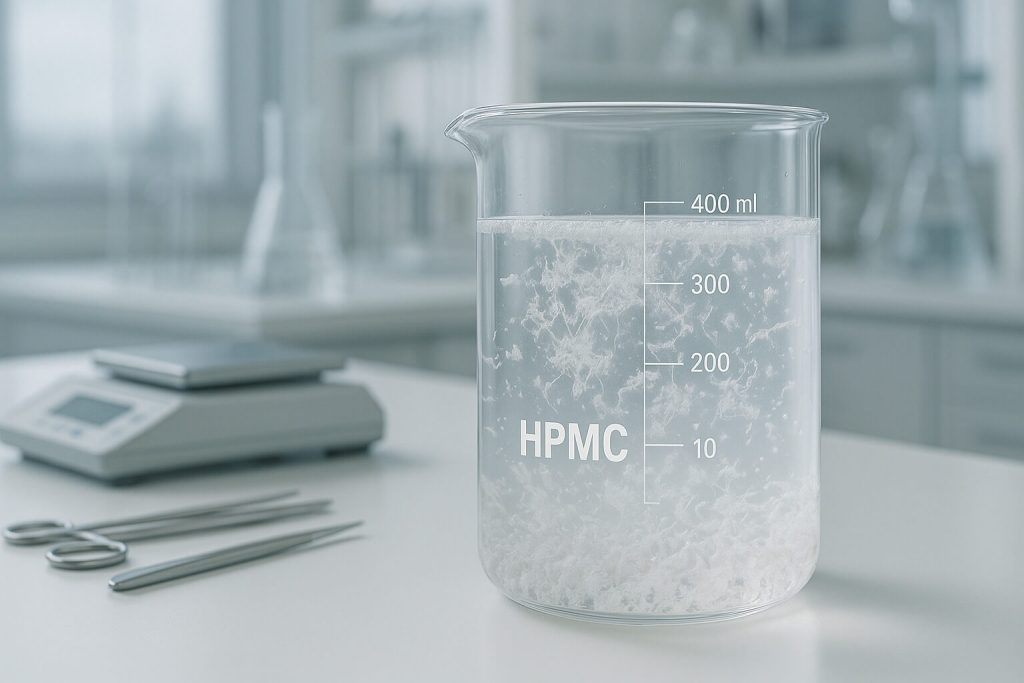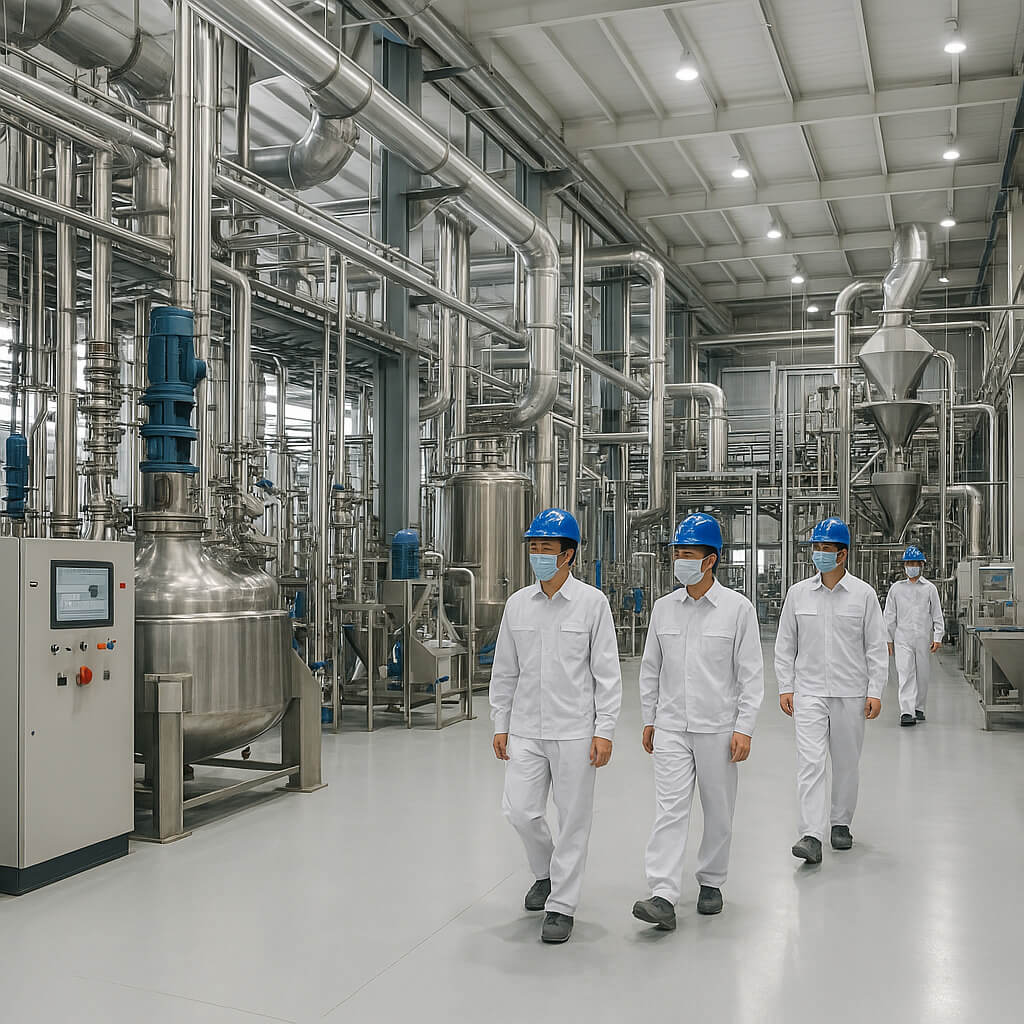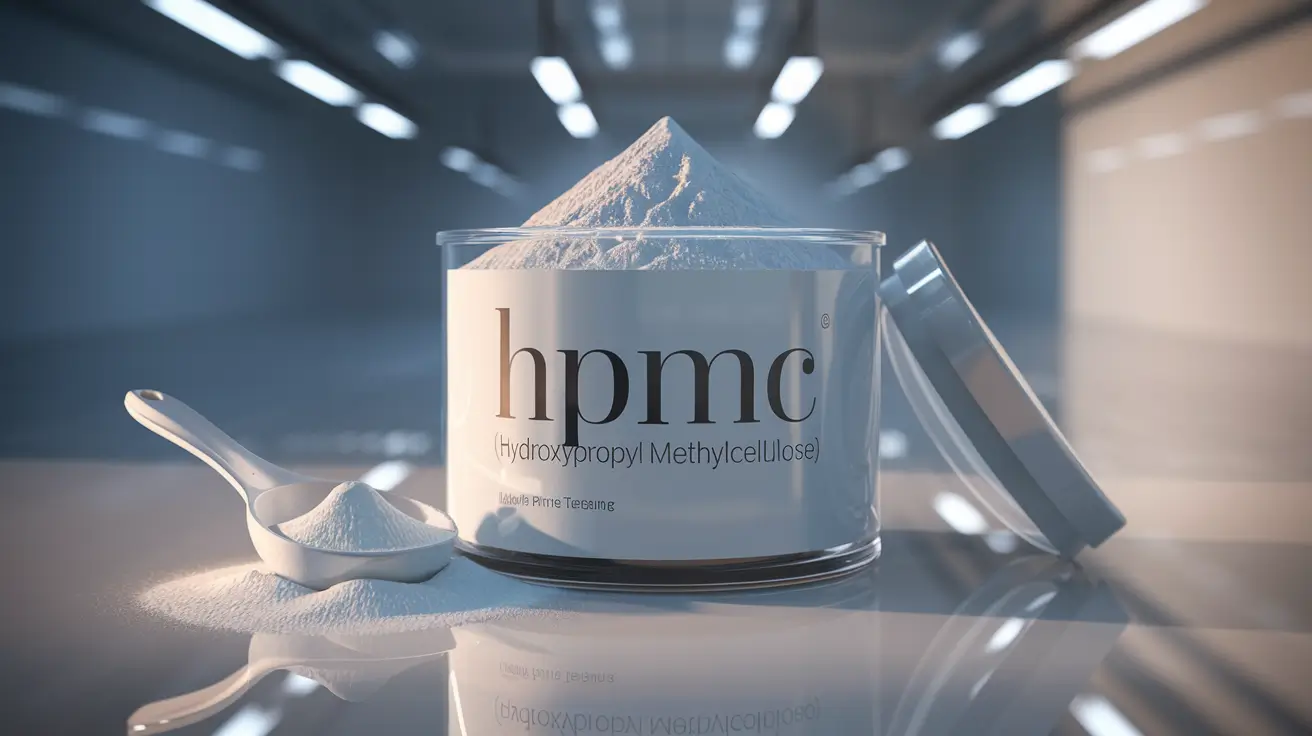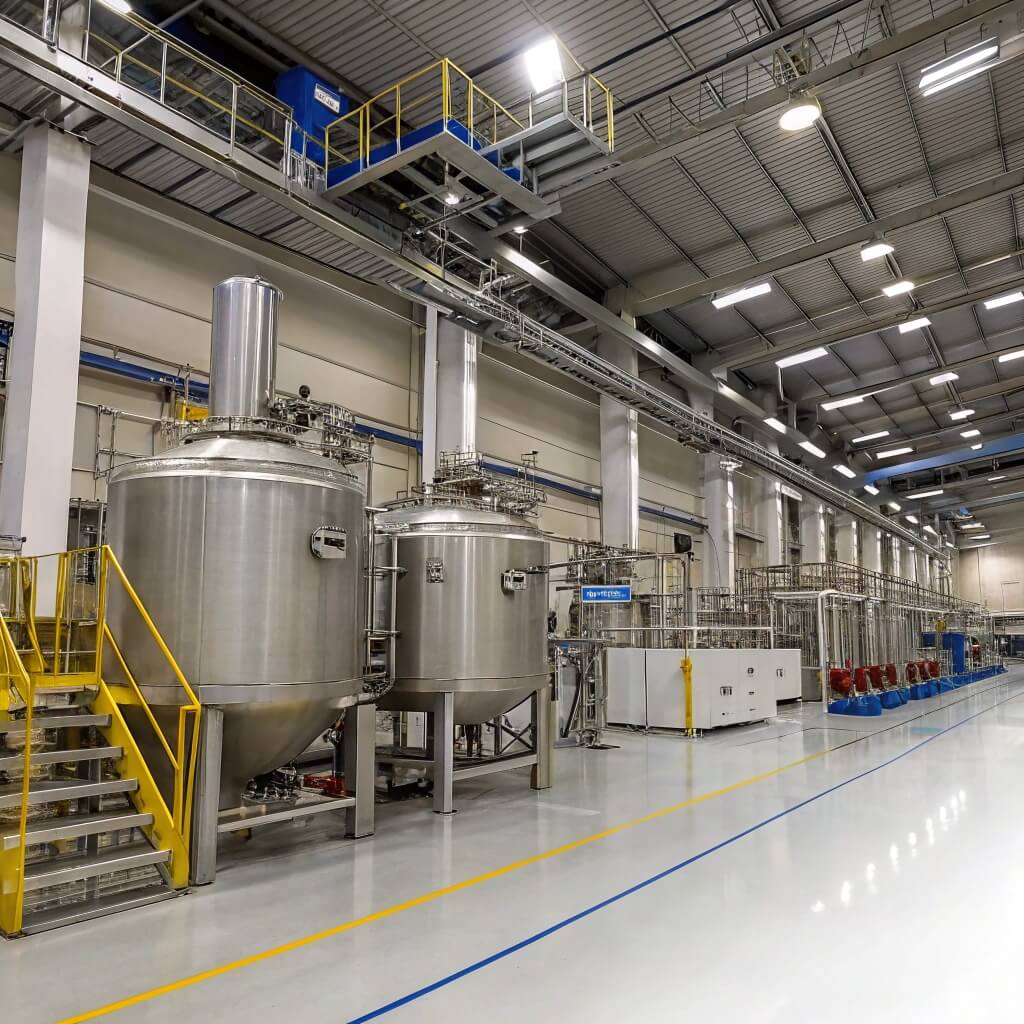Understanding the chemical structure of Hydroxypropyl Methylcellulose (HPMC) is essential for businesses that utilize this versatile material in their processes. Whether you’re in pharmaceuticals, construction, or food production, knowing how the structure of HPMC affects its properties can help you make better decisions in product development and manufacturing. In this article, we’ll explore the chemical makeup of HPMC, its impact on performance, and its applications in various industries.

1. What is HPMC and Why is Its Chemical Structure Important?
HPMC, or Hydroxypropyl Methylcellulose, is a non-ionic, water-soluble polymer derived from cellulose. The cellulose is modified with hydroxypropyl and methyl groups, giving HPMC unique properties that make it highly valuable in industries such as pharmaceuticals, food production, and construction.
So, why should you care about its chemical structure? The structure of HPMC dictates its solubility, viscosity, water retention properties, and its overall effectiveness in different applications. These factors make it an essential ingredient in many products.
In the pharmaceutical industry, HPMC is used in tablet formulations and as a stabilizer for controlled-release drugs. Its unique structure ensures that it forms a gel-like consistency in water, which aids in the controlled release of medication. In food production, HPMC is used to improve the texture of gluten-free products, while in construction, it acts as a water-retention agent in dry mixes.
Understanding how the hydroxypropyl and methyl groups affect HPMC’s properties helps manufacturers optimize its use for specific applications.
Table: Key Characteristics of HPMC
| Proprietà | Descrizione |
|---|---|
| Chemical Composition | Modified cellulose with hydroxypropyl and methyl groups |
| Solubilità | Water-soluble, forms gel in water |
| Viscosità | Can be adjusted based on application |
| Applicazioni comuni | Prodotti farmaceutici, alimentari, edili, cosmetici |
2. How is HPMC Chemically Manufactured?
The manufacturing process of HPMC begins with cellulose, a natural polymer derived from plants. The cellulose is treated with chemicals like propylene oxide and methyl chloride to introduce hydroxypropyl and methyl groups. This chemical modification is what gives HPMC its unique properties.
Here’s the breakdown: First, cellulose is dissolved in a strong base, usually sodium hydroxide. Then, propylene oxide and methyl chloride are introduced to react with the cellulose. The result is a polymer that is more soluble in water and has better viscosity and water retention properties than unmodified cellulose.
The production process can be fine-tuned by adjusting the amount of propylene oxide and methyl chloride used, which influences the degree of substitution. The degree of substitution is important because it impacts the solubility, viscosity, and overall performance of HPMC in different applications.
Why does this matter? Understanding the manufacturing process gives businesses a better understanding of how HPMC’s properties can be customized for their needs. For example, a higher degree of substitution results in better solubility, which is essential for pharmaceutical formulations.
Table: Chemical Manufacturing Process of HPMC
| Fare un passo | Descrizione |
|---|---|
| Cellulose Preparation | Cellulose is dissolved in sodium hydroxide |
| Reaction with Chemicals | Propylene oxide and methyl chloride react with cellulose |
| Grado di sostituzione | Adjusted by varying the amount of chemicals used |
| Final Product | HPMC with customized properties for different applications |
3. What Are the Key Components of HPMC’s Chemical Structure?
HPMC is made up of cellulose, which is modified by two key functional groups: hydroxypropyl and methyl groups. The hydroxypropyl group is introduced by reacting cellulose with propylene oxide, while the methyl group is introduced through methyl chloride.
Here’s what happens at the molecular level: The hydroxypropyl group contains a hydroxyl group (-OH), which increases the solubility of the polymer in water. The methyl group, on the other hand, is non-polar and helps in reducing the hydrophilic nature of the molecule. This combination of hydrophilic and hydrophobic components gives HPMC its unique ability to form gels in water and retain moisture in various applications.
These functional groups also affect the polymer’s ability to act as an emulsifier and a stabilizer, which is why HPMC is commonly used in pharmaceuticals for controlled-release tablets and in food to improve texture.
Why is this important? The combination of these groups affects the physical properties of HPMC, making it suitable for various industrial applications. By understanding how these components interact, manufacturers can better control the properties of HPMC to meet their specific needs.
Table: Chemical Components of HPMC
| Componente | Funzione |
|---|---|
| Hydroxypropyl Group | Increases solubility and water retention |
| Methyl Group | Reduces hydrophilic nature, enhances stability |
| Spina dorsale in cellulosa | Provides structure and strength to the polymer |
4. How Does the Chemical Structure of HPMC Affect Its Solubility?
The solubility of HPMC is one of its most important properties, and it’s directly influenced by its chemical structure. The hydroxypropyl group enhances HPMC’s solubility in cold water, making it ideal for use in applications where water solubility is essential.
Here’s the science behind it: The hydroxypropyl group is hydrophilic, meaning it attracts water. This makes HPMC easily soluble in water. In contrast, the methyl group is hydrophobic and helps prevent the polymer from becoming too soluble in organic solvents. This combination of hydrophilic and hydrophobic groups ensures that HPMC has controlled solubility, making it suitable for applications where precise viscosity and gel formation are required.
In pharmaceuticals, this solubility property allows HPMC to form gels in the stomach, which is ideal for controlled drug release. In food, its solubility helps maintain consistency in products like salad dressings and sauces.
So why does it matter for your business? By understanding how HPMC dissolves in water, you can adjust its formulation to achieve the desired texture and viscosity for your specific application.
Table: Solubility of HPMC in Different Environments
| Solvente | Solubilità |
|---|---|
| Acqua | Highly soluble |
| Organic solvents | Low solubility |
| Cold water | Easily soluble |
5. How Does HPMC’s Chemical Structure Influence Its Viscosity?
Viscosity is another critical property of HPMC, and it is greatly influenced by its chemical structure. The hydroxypropyl and methyl groups contribute to its ability to thicken solutions, making it an effective thickening agent in many industrial applications.
Let’s dive into how this works: The hydroxypropyl group, which is hydrophilic, interacts with water molecules and increases the viscosity of a solution. The methyl group, while hydrophobic, helps to stabilize the structure of the polymer, allowing it to maintain its viscosity under various conditions.
HPMC’s viscosity can be adjusted by changing the degree of substitution during its manufacture. A higher degree of substitution leads to a higher viscosity, which is ideal for applications like pharmaceuticals, where the viscosity must be carefully controlled for controlled drug release. In construction, HPMC’s ability to thicken water-based solutions makes it a valuable additive in dry mix mortars and adhesives.
So, why should you care? By understanding how the chemical structure influences viscosity, manufacturers can fine-tune HPMC to meet the specific needs of their products, ensuring optimal performance.
Table: Viscosity of HPMC at Different Substitution Levels
| Grado di sostituzione | Viscosità | Applicazione |
|---|---|---|
| Basso | Basso | Cosmetics, mild formulations |
| Medio | Medio | Food products, industrial applications |
| Alto | Alto | Pharmaceuticals, construction materials |
6. What Are the Functional Groups in HPMC and How Do They Impact Its Performance?
HPMC contains several functional groups that play a key role in its performance. The hydroxypropyl and methyl groups are the most important, but they work together with the cellulose backbone to provide HPMC with its unique properties.
Here’s the breakdown: The hydroxypropyl group’s hydrophilic nature gives HPMC its ability to retain water, making it an effective thickening and emulsifying agent. The methyl group, being hydrophobic, helps prevent excessive solubility in organic solvents, which enhances the stability and durability of the polymer in various formulations.
These functional groups make HPMC highly versatile, allowing it to perform well in a wide range of applications, from pharmaceutical tablets to construction adhesives.
Why is this relevant to your business? Understanding how these functional groups work allows businesses to optimize their use of HPMC, ensuring they achieve the right properties for their specific applications.
Table: Functional Groups in HPMC and Their Roles
| Functional Group | Role in Performance |
|---|---|
| Hydroxypropyl Group | Increases solubility, water retention |
| Methyl Group | Enhances stability, prevents over-solubility |
| Spina dorsale in cellulosa | Provides strength and structure |
7. How Does HPMC’s Chemical Structure Contribute to Its Use in Pharmaceuticals?
HPMC’s chemical structure makes it an excellent choice for the pharmaceutical industry, particularly in drug delivery systems. Its ability to form gels and its controlled solubility make it ideal for controlled-release tablets and capsules.
So, why is this important? The hydroxypropyl group in HPMC increases its solubility, allowing it to dissolve gradually in the digestive system. This slow dissolution helps to release the drug over time, improving therapeutic outcomes.
HPMC’s gel-forming ability also makes it useful in tablet coatings. The gel-like consistency it forms in water ensures that tablets are easy to swallow and protected from moisture, improving their shelf life and stability.
In summary: HPMC’s unique chemical structure allows for controlled drug release, making it essential in the pharmaceutical industry.
Table: HPMC in Pharmaceutical Applications
| Applicazione | Ruolo dell'HPMC |
|---|---|
| Compresse a rilascio controllato | Gradual drug release |
| Rivestimenti per compresse | Gel formation, moisture protection |
| Capsules | Stability and controlled release |
8. What Are the Applications of HPMC Based on Its Chemical Properties?
HPMC’s chemical properties make it suitable for a variety of industries. In food, cosmetics, and pharmaceuticals, its ability to form gels, retain water, and thicken solutions is invaluable.
For example, in the food industry, HPMC is used as a thickener and emulsifier in products like dressings, sauces, and gluten-free baked goods. In cosmetics, it’s used to stabilize emulsions and improve the texture of creams and lotions. In pharmaceuticals, HPMC is crucial for controlled drug delivery systems.
Its versatility also extends to construction, where it is used in dry mix mortars, adhesives, and other cement-based products. Its ability to retain water and improve the workability of these materials makes it a key ingredient in construction formulations.
So, what does this mean for your business? By understanding how HPMC’s chemical properties influence its performance, you can leverage its benefits across multiple industries, optimizing your products for improved performance and efficiency.
Table: HPMC Applications in Various Industries
| Industria | Applicazione |
|---|---|
| Cibo | Thickener, emulsifier |
| Cosmetici | Stabilizer, texture enhancer |
| Prodotti farmaceutici | Controlled drug release, tablet coatings |
| Costruzione | Water retention, workability in mortars |
9. How Does HPMC’s Chemical Structure Compare to Other Cellulose Derivatives?
When comparing HPMC to other cellulose derivatives like Hydroxyethyl Cellulose (HEC) and Methylcellulose (MC), it’s important to understand the structural differences.
Here’s how they stack up: HPMC contains both hydroxypropyl and methyl groups, while HEC contains only hydroxyethyl groups, and MC contains only methyl groups. These differences affect solubility, viscosity, and water retention properties.
HPMC generally has a higher viscosity than HEC and MC, making it more effective in applications that require thickening and water retention. For example, in pharmaceutical formulations, HPMC’s controlled-release properties make it more suitable than HEC or MC.
Why should you care? Knowing the differences between these cellulose derivatives allows you to choose the best material for your application, ensuring that you meet performance and cost requirements.
Table: Comparison of HPMC, HEC, and MC
| Proprietà | HPMC | Il CEC | Il MC |
|---|---|---|---|
| Functional Groups | Hydroxypropyl, Methyl | Hydroxyethyl | Methyl |
| Viscosità | Alto | Moderare | Basso |
| Solubilità | High in water | Moderate in water | Low in water |
| Applicazioni comuni | Pharmaceuticals, food, construction | Cosmetics, paints | Prodotti farmaceutici, alimentari |
10. What Are the Future Trends for HPMC Chemical Structure Innovations?
Looking to the future, we can expect continued advancements in the chemical structure of HPMC. Researchers are constantly exploring ways to modify the structure to improve its performance in various applications.
What’s on the horizon? New methods of modifying the degree of substitution could lead to more customized versions of HPMC with even better properties for specific industries. Additionally, the growing demand for sustainable and eco-friendly products is pushing manufacturers to explore greener methods of producing HPMC.
In the pharmaceutical industry, there is potential for HPMC to play a more prominent role in personalized medicine, where controlled-release formulations are tailored to individual patients.
In conclusion: The future of HPMC looks bright, with innovations in chemical structure leading to new applications and more efficient products.
Table: Future Trends in HPMC
| Tendenza | Impact |
|---|---|
| Customization of Substitution | Better performance, tailored products |
| Produzione sostenibile | Eco-friendly methods, reduced environmental impact |
| Medicina personalizzata | Controlled release tailored to individuals |
Conclusione
In conclusion, understanding the chemical structure of HPMC is crucial for businesses looking to optimize its use in various industries. From pharmaceuticals to construction, HPMC’s unique properties, driven by its hydroxypropyl and methyl groups, make it an invaluable material. As the demand for specialized products increases, innovations in HPMC’s chemical structure will continue to shape its role across multiple industries.
Sezione FAQ
Domanda 1: Che cosa è l'HPMC?
HPMC (Hydroxypropyl Methylcellulose) is a cellulose derivative used in a wide range of industries, including pharmaceuticals, food, cosmetics, and construction, due to its water retention, emulsifying, and thickening properties.
D2: How is HPMC produced?
HPMC is produced by chemically modifying cellulose with propylene oxide and methyl chloride, introducing hydroxypropyl and methyl groups to enhance its solubility and viscosity.
D3: How does HPMC’s chemical structure affect its solubility?
The hydroxypropyl group in HPMC increases its solubility in water, allowing it to dissolve easily and form gels, which is critical for applications like pharmaceuticals and food products.
D4: What makes HPMC ideal for use in pharmaceuticals?
HPMC’s ability to form gels and control drug release makes it essential in pharmaceutical formulations, particularly for controlled-release tablets and tablet coatings.
D5: Come si confronta l'HPMC con altri derivati della cellulosa?
HPMC generally has a higher viscosity than HEC and MC, making it more suitable for applications that require thickening, water retention, and controlled release.




